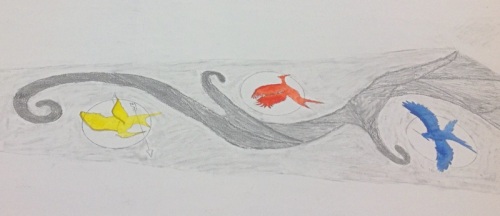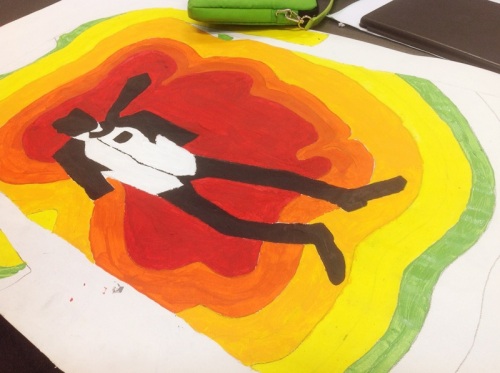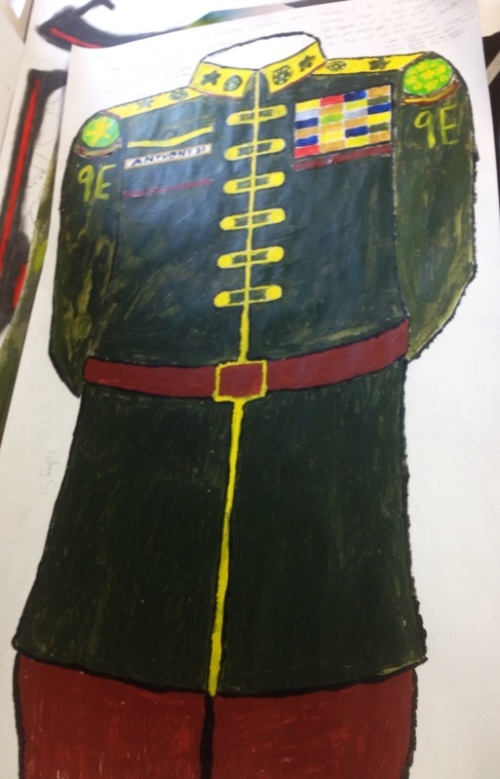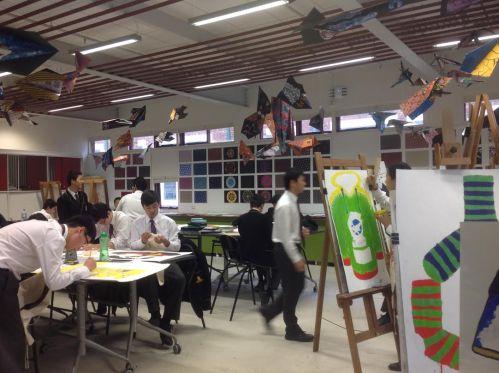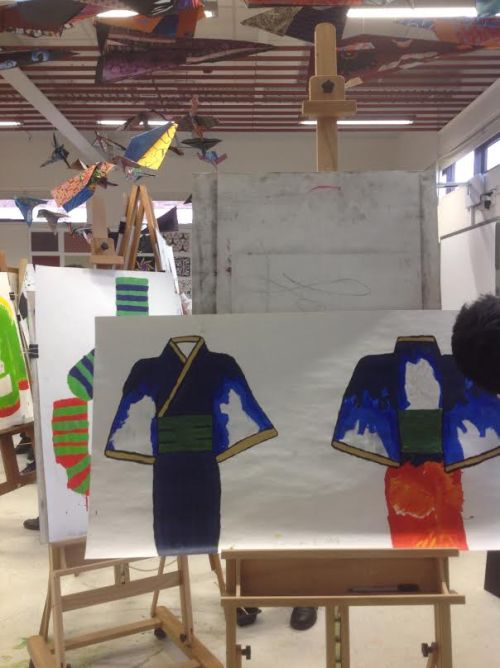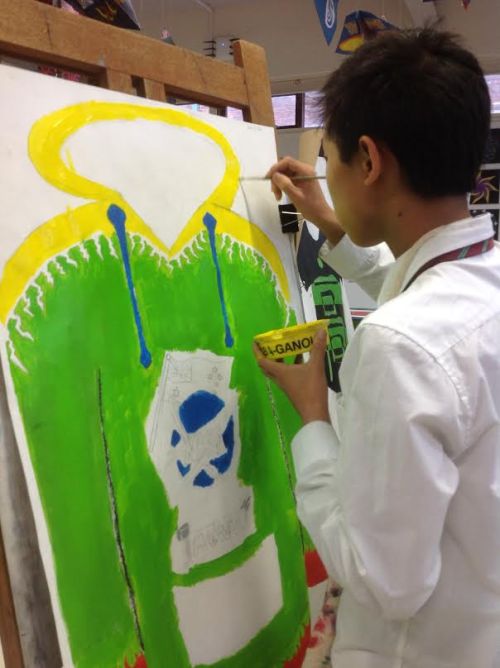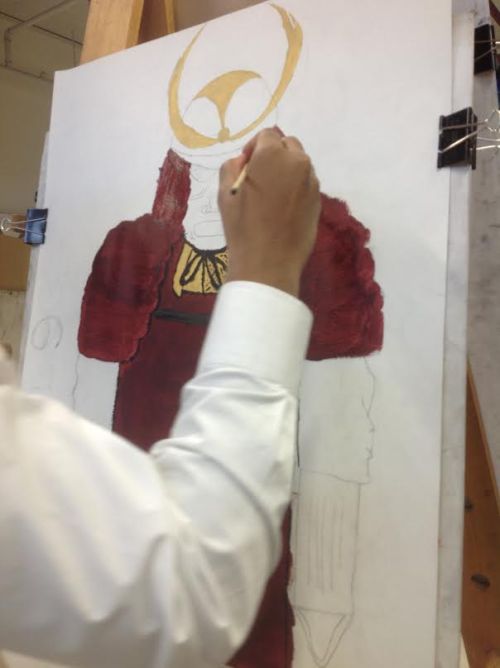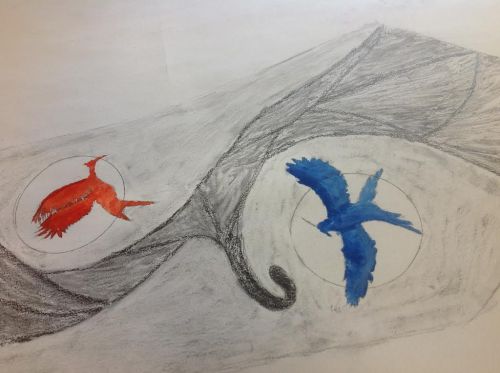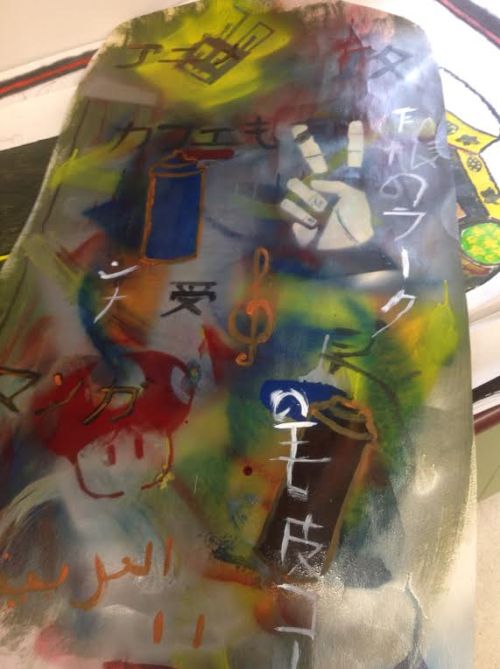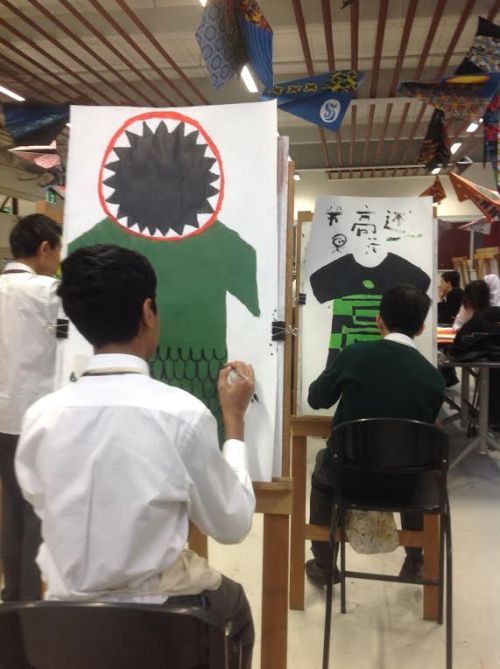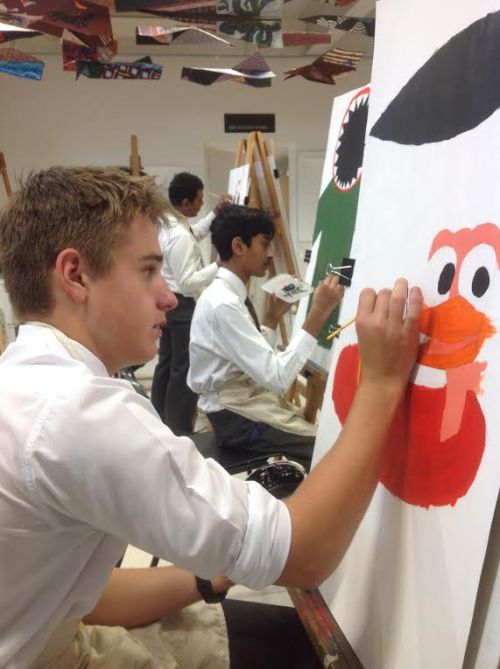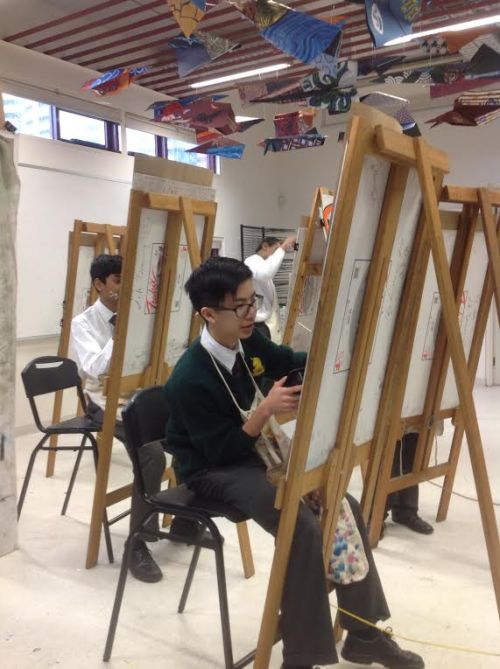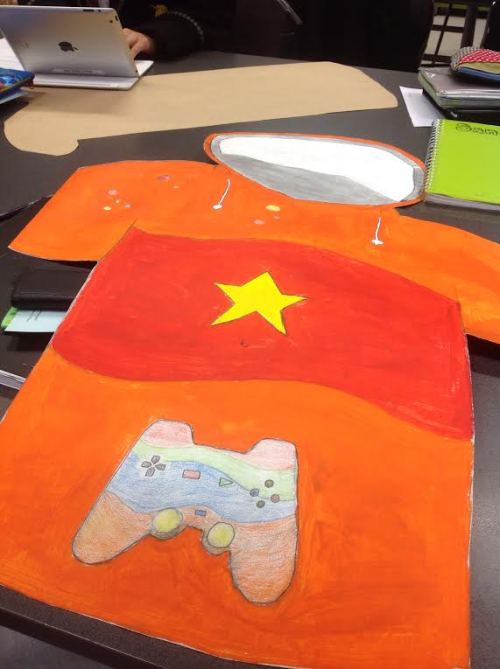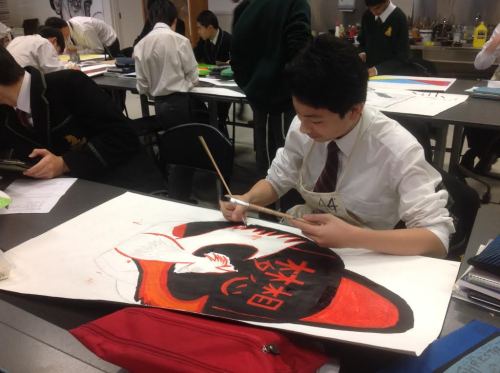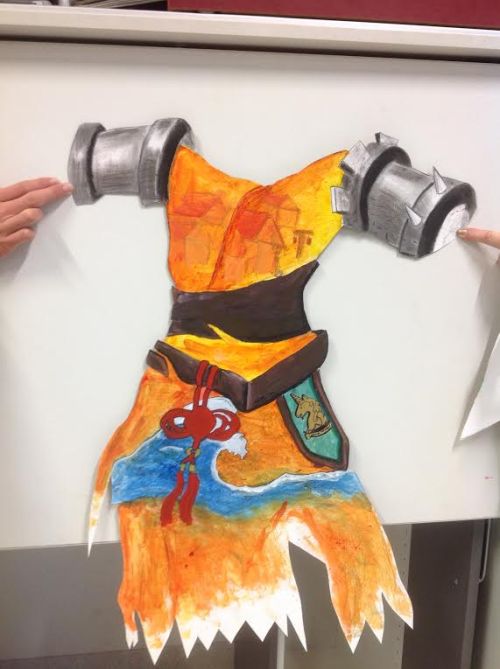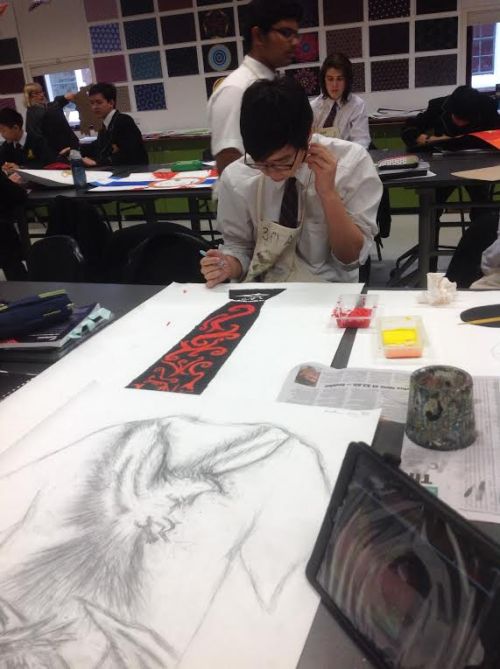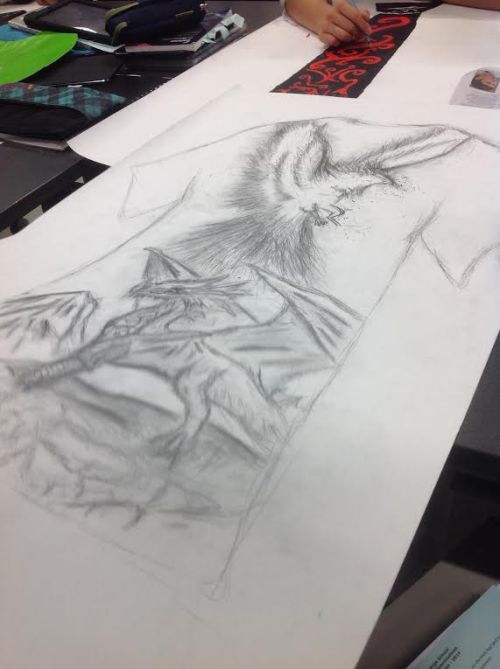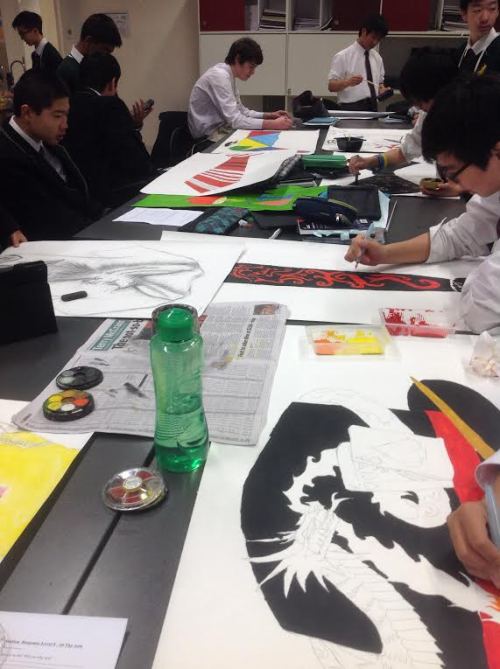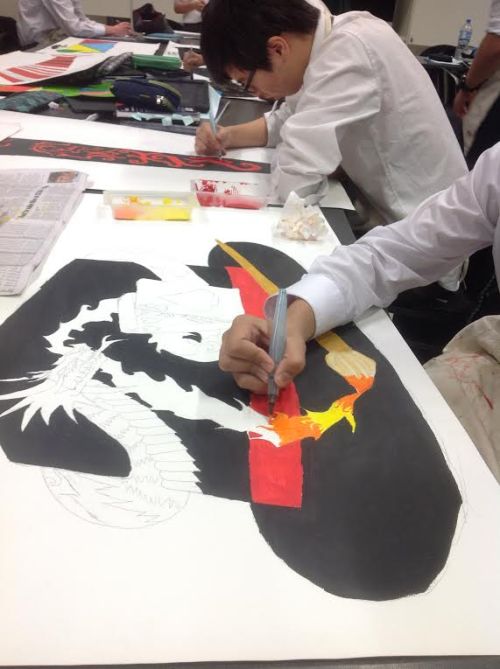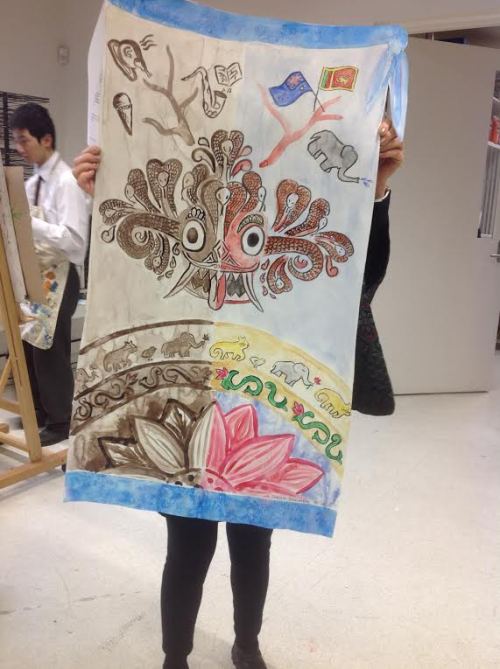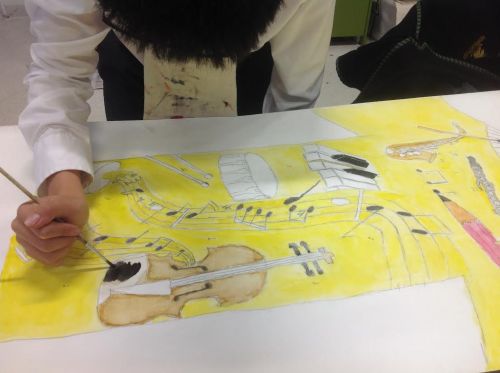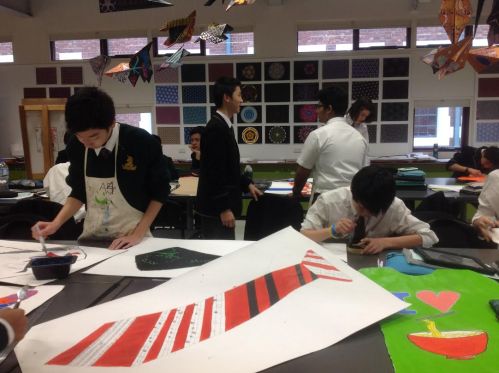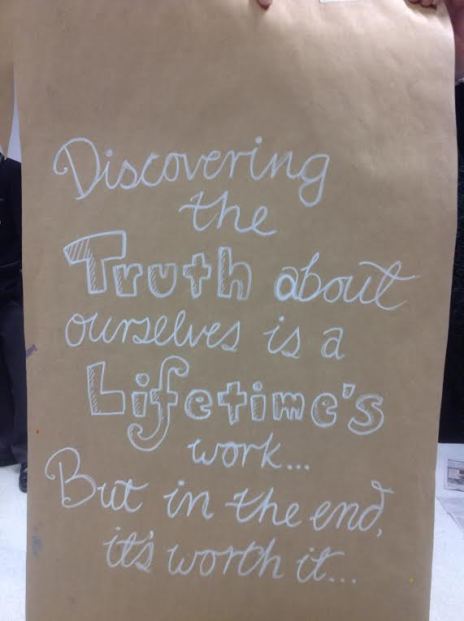
My topic today is Art as a subject in schools. I wonder if we sometimes underestimate or misunderstand the role of Art in a student’s learning. It’s so much more than making pretty pictures. Art personifies learning through a transparent process of deep exploration and problem solving – with an end product to show for it. Just as with literature, the end product can be unpacked to reveal the influences which were part of the creative process. Fortunately this is not a purely scientific process but one which invites the exploration and interpretation of the viewer. Art is a model for problem solving in other areas of learning. We should hold onto Art, and not be fooled into thinking that it is less valuable than subjects which are associated with occupational success. We need Art.
I visited a year 9 class today to see the students happily working on large representations of themselves based on their exploration of the unit ‘Home and Place’. My part in this project was the collaboration with Mihaela Brysha, Head of Art, in resourcing the project in our library website (Libguides). I’m including the project brief:
This unit explores ideas about belonging and is designed to question our relationship and interaction with:
- Others
- Pop culture
- Consumerism
- Cultural beliefs,
- Personal histories
- The natural world
The aim of the exploration is to make and visually interpret personal statements about what home and place means to you and how it shapes personal and cultural identity.
Australian artists Patricia Piccinini, Fiona Hall, Gordon Bennett, and Howard Arkley address some of these ideas from very different perspectives, influences, art forms, aesthetics, materials and techniques. The study of their ideas and studio art practice as well as interpretation and analysis of their artwork aims to provide stimuli for the exploration of ideas, content and techniques for practical explorations.
The online resources were a starting point for further research into these artists:
Fiona Hall; Gordon Bennett; Howard Arkley; Patricia Piccinini
The art of Gordon Bennett strikes a chord with many of our students whose families come from different countries. Bennett’s art depicts the cultural tension between his ties to his Indigenous roots and his association with Western culture.
I loved the size of these art works, their bold colours and strokes, delicate details, diverse imagery and visual storytelling. I loved the energy and focused activity in the classroom, the productive interaction between students and teacher. I took photos.
I’m looking forward to the hanging of these in the art show. Well done, boys, and well done, Mihaela.

